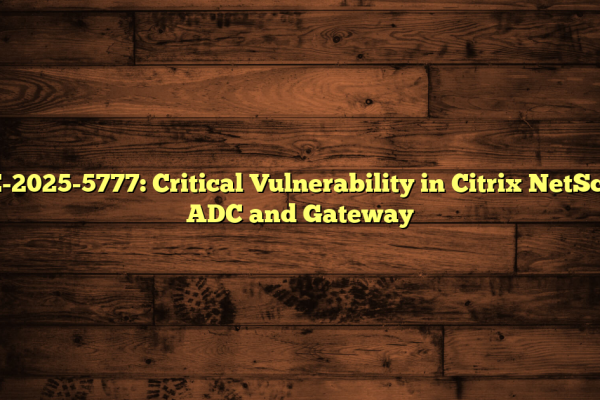SharePoint CVE 2025: A Critical Security Overview
Table of Contents:
- What is SharePoint CVE 2025?
- July 2025 Vulnerabilities
- Additional Vulnerabilities
- Threat Actors
- CISA and Microsoft Guidance
- SharePoint Updates
- Importance of Patch Management
- Summary
- FAQ
SharePoint CVE 2025: A Critical Security Overview
Is your SharePoint server exposed to critical vulnerabilities? In 2025, several security flaws were found in Microsoft SharePoint, especially in on-premises SharePoint Server setups. These vulnerabilities, identified by CVE identifiers like CVE-2025-49704, CVE-2025-49706, CVE-2025-53770, as well as CVE-2025-53771, were quickly used by malicious individuals. This triggered urgent security alerts and patch releases from both Microsoft and cybersecurity organizations.
What is SharePoint CVE 2025?
The term “SharePoint CVE 2025” refers to a series of serious security weaknesses detected in Microsoft SharePoint during the year 2025. These weaknesses specifically affect SharePoint Server deployments that reside on your own infrastructure.
July 2025 Vulnerabilities
What were the most concerning vulnerabilities announced in July 2025?
The vulnerabilities made public in July 2025 included:
- CVE-2025-49704, a remote code execution (RCE) problem,
- CVE-2025-49706, a spoofing vulnerability.
In particular, CVE-2025-49704 allows attackers to run any code they want on vulnerable SharePoint servers. They achieve this without needing to authenticate, effectively gaining total control of the compromised system. CVE-2025-49706 allows attackers to pretend to be sources that the system trusts. It allows them to trick the system into taking actions it should not. Exploiting them together presents a significant hazard to organizations running on-premises SharePoint environments that are accessible from the internet.
Additional Vulnerabilities
After the initial disclosure, Microsoft discovered more related vulnerabilities.
- CVE-2025-53770, a version of CVE-2025-49706,
- CVE-2025-53771, a patch bypass vulnerability, which defeated fixes for CVE-2025-49706.
These vulnerabilities complicated security even further. Attackers adapted their methods to get past current protections. Microsoft responded by releasing combined security updates covering all SharePoint versions that are supported. This includes SharePoint Server 2016, 2019, including the Subscription Edition. Microsoft urged everyone to immediately apply fixes in order to lower risks from ongoing exploits.
Threat Actors
Who is exploiting these vulnerabilities?
The exploitation of these SharePoint vulnerabilities has been traced back to sophisticated threat actors. Groups based in China, such as Linen Typhoon, Violet Typhoon, but also Storm-2603, appear to be connected to governments. These groups have added SharePoint exploits to their attacks, targeting organizations that have SharePoint servers accessible through the internet. SharePoint’s tight integration with other Microsoft products, such as Office, Teams, OneDrive, as well as Outlook, significantly raises the danger of a successful breach. Attackers exploit SharePoint to move around inside a network and gain access to sensitive data.
CISA and Microsoft Guidance
Given the active exploitation, the Cybersecurity, also Infrastructure Security Agency (CISA) added these vulnerabilities to its Known Exploited Vulnerabilities Catalog. This highlights how important it is for organizations to take steps to protect themselves. CISA, together with Microsoft, gave thorough advice on detection, protection, as well as remediation. These are the key recommendations:
- Apply the latest security updates released by Microsoft for all supported SharePoint versions immediately.
- Make sure the Antimalware Scan Interface (AMSI) is on. Ensure it is set up correctly on SharePoint servers, deploying Defender Antivirus, ora similar type of endpoint protection. AMSI integration, enabled by default in recent SharePoint updates, helps to detect and block malicious scripts along with code execution attempts.
- Rotate SharePoint Server ASP.NET machine keys to invalidate authentication tokens that might have been compromised.
- Limit the exposure of SharePoint servers to the internet. This includes disconnecting vulnerable servers from direct internet access if patching is not possible right away. Consider using VPNs, proxies, or authentication gateways to restrict unauthenticated traffic.
SharePoint Updates
Because SharePoint security updates are cumulative, the latest patches also address earlier vulnerabilities. This simplifies the update process. Microsoft highlights how crucial it is to use SharePoint versions that are still supported. Unsupported versions do not receive security updates, therefore they are left vulnerable to exploits.
Importance of Patch Management
The ongoing threat surrounding SharePoint vulnerabilities in 2025 highlights the importance of organizations keeping up with patch management together with endpoint security best practices. Because SharePoint works as a central collaboration as well as document management platform, its compromise may lead to operational issues and data breaches.
Summary
What is the main takeaway?
In short, “SharePoint CVE 2025” includes a set of serious vulnerabilities affecting on-premises Microsoft SharePoint servers that are being actively exploited. Remote code execution and spoofing attacks are possible through them. Advanced threat actors, sometimes linked to nation-states, have exploited them. Microsoft in addition to cybersecurity agencies have released urgent patches accompanied by advice for mitigation, emphasizing immediate action to protect affected systems. Organizations should apply security updates quickly, enable AMSI in combination with antivirus protections, rotate cryptographic keys, and restrict internet exposure of SharePoint servers. By doing this, they reduce risk. All of this shows the constant challenge to secure complex enterprise platforms against evolving cyber threats.
FAQ
What is a CVE?
CVE stands for Common Vulnerabilities as well as Exposures. It’s a standard way to name and identify known security vulnerabilities.
How do I check if my SharePoint server is vulnerable?
Check the version of your SharePoint Server. If it’s an affected version (SharePoint Server 2016, 2019, or Subscription Edition), make sure you’ve applied the latest security updates from Microsoft.
Where do I get the latest security updates for SharePoint?
Download updates from the Microsoft Download Center or through Windows Server Update Services (WSUS).
What is AMSI and how does it help?
AMSI is the Antimalware Scan Interface. It lets antivirus solutions examine scripts at runtime, helping to detect malicious code. Make sure AMSI is enabled on your SharePoint servers.
Resources & References:
- https://www.alstonprivacy.com/microsoft-announces-two-new-on-premises-sharepoint-vulnerabilities/
- https://msrc.microsoft.com/blog/2025/07/customer-guidance-for-sharepoint-vulnerability-cve-2025-53770/
- https://unit42.paloaltonetworks.com/microsoft-sharepoint-cve-2025-49704-cve-2025-49706-cve-2025-53770/
- https://www.cisa.gov/news-events/alerts/2025/07/20/update-microsoft-releases-guidance-exploitation-sharepoint-vulnerabilities
- https://www.microsoft.com/en-us/security/blog/2025/07/22/disrupting-active-exploitation-of-on-premises-sharepoint-vulnerabilities/





